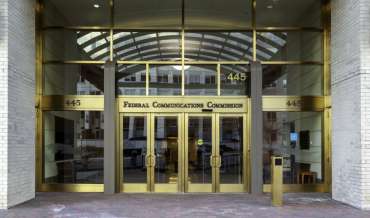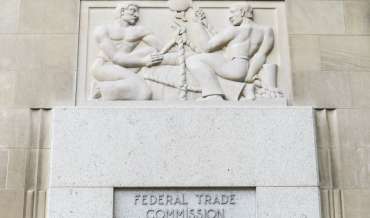Table of Contents
- Overview
- STIR/SHAKEN Is the New Framework for Robocall Regulations
- How Does STIR/SHAKEN Affect Call Deliverability?
- How Can I Ensure That My Calls Are Not Blocked By STIR/SHAKEN?
Overview
The Telephone Consumer Protection Act (TCPA) was signed into law in 1991—eons ago with regards to telecommunications technology. At the time that the law was drafted and passed, one of the primary regulatory concerns was the then-prevalent practice of sending junk faxes. Now, in the smartphone era, regulators are far more concerned with robocalls.
The advancement of telecom technology over the past three decades is reflected in a regulatory emphasis on technological solutions. Through Federal Communications Commission (FCC) rulemaking and legislation such as The TRACED Act and state-level laws, regulators have mandated that telecom providers institute procedures to prevent the transmission of illegal robocalls.
The problem is that these sorts of solutions for illegal calls are likely to also impact marketers who operate legally. If this is a new era for regulators, it is also a new era for marketers; one in which ensuring call deliverability is a paramount concern.
STIR/SHAKEN Is the New Framework for Robocall Regulations
At the center of these robocall blocking mandates is a suite of call authentication protocols known as STIR/SHAKEN (or SHAKEN/STIR). These are technological standards that allow telecom carriers to verify that the calls that travel through their networks are using legitimate, non-spoofed phone numbers.
STIR stands for Secure Telephony Identity Revisited. It is a series of call authentication standards to be used for Voice over Internet Protocol (VoIP) calls. It works by adding a digital certificate into the process used to initiate and route VoIP calls—a process known as Session Initiation Protocol (SIP Protocol).
SHAKEN stands for Signature-based Handling of Asserted information using toKENs. It is a similar set of standards to STIR but it is used for calls to wireless and landline phone numbers rather than VoIP numbers.
The FCC has mandated that telecom carriers make use of STIR/SHAKEN, or similar protocols, in order to develop call blocking features to combat illegal robocalls and other sorts of fraudulent telephonic schemes. Major telecom carriers were required to adopt these protocols by June 30, 2021. Smaller carriers have until June 30, 2022.
How Does STIR/SHAKEN Affect Call Deliverability?
While the FCC’s goal in mandating the adoption of STIR/SHAKEN protocols is to make it more difficult for scammers to effectuate their schemes through the use of spoofed numbers and robocalls, there are unintended consequences for many legitimate callers. While robocalls and called ID spoofing are both highly regulated practices, neither is illegal. Indeed, there are many legitimate uses for both techniques.
In the past, telecom carriers had been expected to make every effort to connect as many transmitted calls as possible. However, the emphasis on STIR/SHAKEN and robocall blocking means that the priorities for carriers are irrevocably changed. Now carriers are expected to prioritize preventing illegal robocalls, even if it is at the cost of mistakenly blocking legitimate calls. As a result, callers are put in a position in which it is imperative to take proactive measures to ensure call deliverability. The FCC has signaled this shift in priorities by issuing cease-and-desist letters to carriers that transmit illegal robocalls.
Carriers have adopted this new framework in which blocking illegal calls is prioritized over ensuring that all lawful calls are transmitted. According to NBC Bay Area, AT&T claimed, shortly after the June 30, 2021 deadline, to have used STIR/SHAKEN to block one billion phone numbers. Anecdotally, callers have noticed indications of lessened call deliverability.
While STIR/SHAKEN provides certain common technological elements, each carrier has its own robocall blocking procedures and technologies. As a result, the extent to which those policies and technologies prevent lawful callers from completing their calls varies from carrier to carrier. The negative consequences for callers fall into two broad categories:
- Having their calls mistakenly flagged in the recipient’s caller ID as “Scam Likely”, “Spam Likely”, or some similar designation.
- Having their calls blocked entirely.
How Can I Ensure That My Calls Are Not Blocked By STIR/SHAKEN?
In July 2020, the FCC adopted a new rule as part of its effort to implement the TRACED Act that provides a safe harbor for phone providers who use call authentication frameworks such as SHAKEN/STIR and, as a result, mistakenly block legitimate calls. Thankfully, the order also lays out steps to provide recourse for callers whose calls are undeservedly blocked:
“We require that any voice service provider that blocks calls must designate a single point of contact for callers, as well as other voice service providers, to report blocking errors at no charge to callers or other voice service providers…
“Blocking providers must investigate and resolve these blocking disputes in a reasonable amount of time and at no cost to the caller, so long as the complaint is made in good faith… Blocking providers must also publish contact information clearly and conspicuously on their public-facing websites. We further require that when a caller makes a credible claim of erroneous blocking and the voice service provider determines that the calls should not have been blocked, a voice service provider must promptly cease blocking calls from that number unless circumstances change.”
Of course, the FCC is required to balance the sometimes competing interests of different groups, such as providers, callers, and the public at large. And as an agency whose leadership is composed of political appointees, the FCC’s priorities can change drastically depending on the ideological bent of the current president and the party that controls congress. As a result, marketers need to make every effort to protect themselves from any potential circumstances in which the implementation and regulation of SHAKEN/STIR protocols puts callers at a disadvantage.
Among the most important of such efforts is knowing your “Spam Likely” score. A caller ID reputation monitoring system is essential to keeping track of your spam likely score. Daily monitoring of your outposted phone numbers will ensure your calls are delivered to the intended recipient.
If you discover that your calls are erroneously being flagged as “Spam Likely”, there are a number of different actions you can take depending on your circumstances, risk level, and operating environment. The actions you take can include:
- Rotating to a different phone number with no spam score.
- Evaluating your dialer settings. Are they too aggressive?
- Only calling contacts who have provided express written consent.
For more information about STIR/SHAKEN, click here for a free guide.





